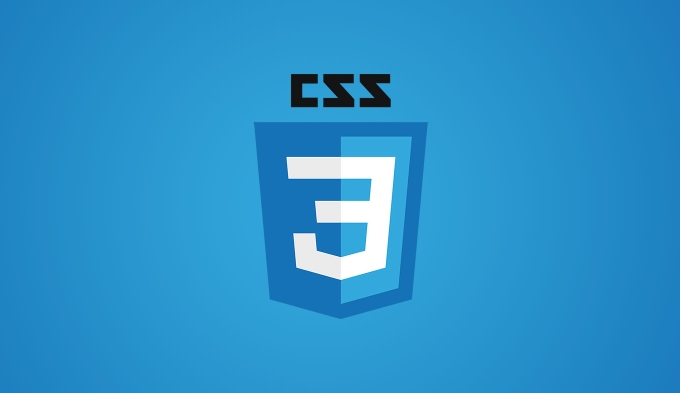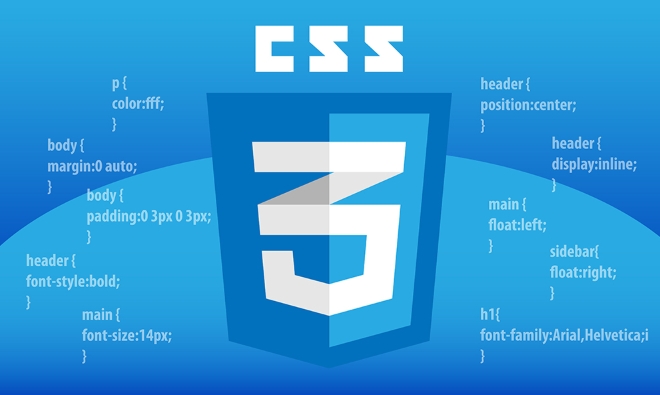Yes, you can use WebKit pseudo-elements and Firefox-specific properties to beautify scrollbars through CSS. 1. Use pseudo-elements such as ::-webkit-scrollbar, ::-webkit-scrollbar-track, ::-webkit-scrollbar-thumb to customize scrollbar styles in Chrome, Edge, Safari; 2. Use scrollbar-width and scrollbar-color properties in Firefox to set scrollbar width and color; 3. Combine the two to achieve cross-browser compatibility; 4. It is recommended to retain accessibility, add hover effects, avoid too narrow sliders, and apply styles to specific containers when necessary, so as to achieve consistent and beautiful scrollbar effects in modern browsers.

Styling a scrollbar with CSS is possible using pseudo-elements and specific properties supported primarily in WebKit-based browsers (like Chrome, Edge, and Safari). While Firefox has limited support, you can still apply basic scrollbar colors in some cases. Here's how to do it effectively.

Using WebKit Scrollbar Pseudo-Elements
WebKit provides a set of pseudo-elements that let you style different parts of the scrollbar. These are not part of the official CSS standard but are widely supported.
Here's a common way to style a custom scrollbar:

/* Target the scrollbar as a whole */
::-webkit-scrollbar {
width: 12px; /* Vertical scrollbar width */
height: 12px; /* Horizontal scrollbar height (if needed) */
}
/* Style the track (background of the scrollbar) */
::-webkit-scrollbar-track {
background: #f1f1f1;
border-radius: 10px;
}
/* Style the thumb (the draggable part) */
::-webkit-scrollbar-thumb {
background: #c1c1c1;
border-radius: 10px;
border: 2px solid #f1f1f1; /* Optional: adds spacing between thumb and track */
}
/* Hover effect on the thumb */
::-webkit-scrollbar-thumb:hover {
background: #a8a8a8;
}
/* Optional: style the corner (where horizontal and vertical scrollbars meet) */
::-webkit-scrollbar-corner {
background: #e1e1e1;
}This gives you full control over the appearance of the scrollbar in Chrome, Edge, and Safari.
Styling Scrollbars in Firefox
Firefox supports a simpler approach using the scrollbar-width and scrollbar-color properties.

/* For the entire document */
* {
scrollbar-width: thin; /* Options: auto, thin, none */
scrollbar-color: #c1c1c1 #f1f1f1; /* thumb and track color */
}-
scrollbar-width: controls the thickness. -
scrollbar-color: sets the thumb and track colors respectively.
Note: These properties only work on elements with overflow, not on all elements universally.
Cross-Browser Considerations
Since WebKit styles are ignored by Firefox and older browsers, you can safely combine both approaches:
/* Firefox */
* {
scrollbar-width: thin;
scrollbar-color: #c1c1 #f1f1f1;
}
/* WebKit (Chrome, Edge, Safari) */
::-webkit-scrollbar {
width: 12px;
}
::-webkit-scrollbar-track {
background: #f1f1f1;
border-radius: 10px;
}
::-webkit-scrollbar-thumb {
background: #c1c1c1;
border-radius: 10px;
border: 2px solid #f1f1f1;
}
::-webkit-scrollbar-thumb:hover {
background: #a8a8a8;
}This ensures a consistent look where possible.
Tips and Best Practices
- Don't remove scrollbars entirely unless necessary — users rely on visual cues for scrollable content.
- Keep hover states to improve interaction.
- Test on multiple devices — some mobile or touch-based systems hide scrollbars by default.
- Avoid overly thin scrollbars — accessibility matters; make sure the thumb is easy to grab.
You can also apply styles to specific containers instead of globally:
.custom-container::-webkit-scrollbar {
height: 8px;
width: 8px;
}This is useful when only certain elements (like a chat box or modal) need custom scroll behavior.
Basically, it's not fully standardized, but with a mix of WebKit and Firefox-specific properties, you can achieve a poisoned, custom scrollbar across most modern browsers.
The above is the detailed content of How to style a scrollbar with CSS?. For more information, please follow other related articles on the PHP Chinese website!

Hot AI Tools

Undress AI Tool
Undress images for free

Undresser.AI Undress
AI-powered app for creating realistic nude photos

AI Clothes Remover
Online AI tool for removing clothes from photos.

Clothoff.io
AI clothes remover

Video Face Swap
Swap faces in any video effortlessly with our completely free AI face swap tool!

Hot Article

Hot Tools

Notepad++7.3.1
Easy-to-use and free code editor

SublimeText3 Chinese version
Chinese version, very easy to use

Zend Studio 13.0.1
Powerful PHP integrated development environment

Dreamweaver CS6
Visual web development tools

SublimeText3 Mac version
God-level code editing software (SublimeText3)

Hot Topics
 CSS tutorial for creating loading spinners and animations
Jul 07, 2025 am 12:07 AM
CSS tutorial for creating loading spinners and animations
Jul 07, 2025 am 12:07 AM
There are three ways to create a CSS loading rotator: 1. Use the basic rotator of borders to achieve simple animation through HTML and CSS; 2. Use a custom rotator of multiple points to achieve the jump effect through different delay times; 3. Add a rotator in the button and switch classes through JavaScript to display the loading status. Each approach emphasizes the importance of design details such as color, size, accessibility and performance optimization to enhance the user experience.
 Addressing CSS Browser Compatibility issues and prefixes
Jul 07, 2025 am 01:44 AM
Addressing CSS Browser Compatibility issues and prefixes
Jul 07, 2025 am 01:44 AM
To deal with CSS browser compatibility and prefix issues, you need to understand the differences in browser support and use vendor prefixes reasonably. 1. Understand common problems such as Flexbox and Grid support, position:sticky invalid, and animation performance is different; 2. Check CanIuse confirmation feature support status; 3. Correctly use -webkit-, -moz-, -ms-, -o- and other manufacturer prefixes; 4. It is recommended to use Autoprefixer to automatically add prefixes; 5. Install PostCSS and configure browserslist to specify the target browser; 6. Automatically handle compatibility during construction; 7. Modernizr detection features can be used for old projects; 8. No need to pursue consistency of all browsers,
 Creating custom shapes with css clip-path
Jul 09, 2025 am 01:29 AM
Creating custom shapes with css clip-path
Jul 09, 2025 am 01:29 AM
Use the clip-path attribute of CSS to crop elements into custom shapes, such as triangles, circular notches, polygons, etc., without relying on pictures or SVGs. Its advantages include: 1. Supports a variety of basic shapes such as circle, ellipse, polygon, etc.; 2. Responsive adjustment and adaptable to mobile terminals; 3. Easy to animation, and can be combined with hover or JavaScript to achieve dynamic effects; 4. It does not affect the layout flow, and only crops the display area. Common usages are such as circular clip-path:circle (50pxatcenter) and triangle clip-path:polygon (50%0%, 100 0%, 0 0%). Notice
 What is the difference between display: inline, display: block, and display: inline-block?
Jul 11, 2025 am 03:25 AM
What is the difference between display: inline, display: block, and display: inline-block?
Jul 11, 2025 am 03:25 AM
Themaindifferencesbetweendisplay:inline,block,andinline-blockinHTML/CSSarelayoutbehavior,spaceusage,andstylingcontrol.1.Inlineelementsflowwithtext,don’tstartonnewlines,ignorewidth/height,andonlyapplyhorizontalpadding/margins—idealforinlinetextstyling
 Styling visited links differently with CSS
Jul 11, 2025 am 03:26 AM
Styling visited links differently with CSS
Jul 11, 2025 am 03:26 AM
Setting the style of links you have visited can improve the user experience, especially in content-intensive websites to help users navigate better. 1. Use CSS's: visited pseudo-class to define the style of the visited link, such as color changes; 2. Note that the browser only allows modification of some attributes due to privacy restrictions; 3. The color selection should be coordinated with the overall style to avoid abruptness; 4. The mobile terminal may not display this effect, and it is recommended to combine it with other visual prompts such as icon auxiliary logos.
 What is the CSS Painting API?
Jul 04, 2025 am 02:16 AM
What is the CSS Painting API?
Jul 04, 2025 am 02:16 AM
TheCSSPaintingAPIenablesdynamicimagegenerationinCSSusingJavaScript.1.DeveloperscreateaPaintWorkletclasswithapaint()method.2.TheyregisteritviaregisterPaint().3.ThecustompaintfunctionisthenusedinCSSpropertieslikebackground-image.Thisallowsfordynamicvis
 How to create responsive images using CSS?
Jul 15, 2025 am 01:10 AM
How to create responsive images using CSS?
Jul 15, 2025 am 01:10 AM
To create responsive images using CSS, it can be mainly achieved through the following methods: 1. Use max-width:100% and height:auto to allow the image to adapt to the container width while maintaining the proportion; 2. Use HTML's srcset and sizes attributes to intelligently load the image sources adapted to different screens; 3. Use object-fit and object-position to control image cropping and focus display. Together, these methods ensure that the images are presented clearly and beautifully on different devices.
 What are common CSS browser inconsistencies?
Jul 26, 2025 am 07:04 AM
What are common CSS browser inconsistencies?
Jul 26, 2025 am 07:04 AM
Different browsers have differences in CSS parsing, resulting in inconsistent display effects, mainly including the default style difference, box model calculation method, Flexbox and Grid layout support level, and inconsistent behavior of certain CSS attributes. 1. The default style processing is inconsistent. The solution is to use CSSReset or Normalize.css to unify the initial style; 2. The box model calculation method of the old version of IE is different. It is recommended to use box-sizing:border-box in a unified manner; 3. Flexbox and Grid perform differently in edge cases or in old versions. More tests and use Autoprefixer; 4. Some CSS attribute behaviors are inconsistent. CanIuse must be consulted and downgraded.






